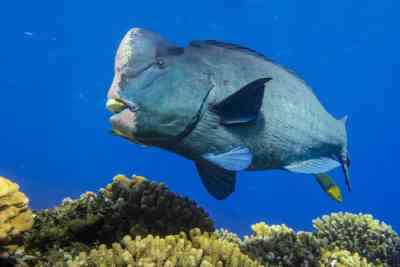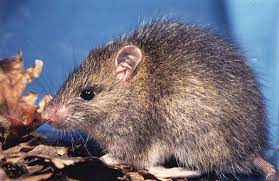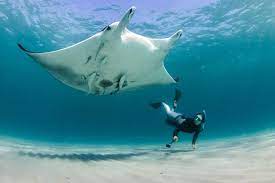Nestled amidst the vast expanse of the Pacific Ocean, the islands of Polynesia are not only a paradise of crystal-clear waters and lush landscapes but also a haven for a unique and diverse array of wildlife. The Polynesian islands, including renowned destinations like Hawaii, Tahiti, and Fiji, host an astonishing variety of fauna that has evolved in isolation, resulting in distinct species found nowhere else on Earth.
From vibrant marine life inhabiting the surrounding coral reefs to exotic land-dwelling creatures adapted to the island ecosystems, Polynesia’s animal kingdom is a captivating realm waiting to be explored.
In this article, we embark on a virtual journey to discover and appreciate the incredible and often lesser-known animals of Polynesia home, shedding light on their ecological significance and the urgent need for conservation to preserve these treasures of the Pacific. Join us as we unravel the enchanting world of animals in Polynesia, celebrating the biodiversity that contributes to the allure of these paradisiacal islands.
Table of Contents
Brief Overview of Polynesia and its Geographical and Cultural Significance:
Polynesia, a region encompassing a vast area of the central and southern Pacific Ocean, is a collection of over a thousand islands and atolls divided into several island nations and territories. This expanse covers the famed Hawaiian Islands, Easter Island, Samoa, Tonga, Tahiti, and Fiji, among many others. Geographically, Polynesia is renowned for its stunning landscapes, volcanic islands, coral reefs, and warm tropical climates.
Culturally, Polynesia holds immense significance as the cradle of an ancient seafaring civilization, renowned for its exceptional navigation skills across vast ocean expanses. The Polynesians’ maritime prowess allowed them to navigate the Pacific and settle these isolated islands, a testament to their advanced understanding of celestial navigation and ocean currents.
Today, the rich and diverse cultures of Polynesia are celebrated through traditional arts, music, dance, and oral histories that have been passed down through generations. The unique blend of nature and culture makes Polynesia an area of paramount importance, not only for its breathtaking beauty but also for its historical and cultural legacy that continues to inspire and awe.
Humpback Whales (Megaptera novaeangliae):

Humpback whales, known for their immense size and hauntingly beautiful songs, grace the waters of Polynesia during their annual migrations. These gentle giants travel thousands of miles, from their feeding grounds near Antarctica to warmer tropical waters like those around Tonga and French Polynesia. In these Pacific paradises, they engage in crucial behaviors such as mating and calving.
Witnessing a humpback breach or hearing their haunting melodies is an awe-inspiring experience. Sadly, humpback whales have faced threats from human activities, including historical whaling, habitat destruction, and entanglement in fishing gear. Conservation efforts and responsible whale-watching practices are vital to ensure their continued presence in these magnificent Pacific waters.
Green Sea Turtles (Chelonia mydas):

The green sea turtle, a symbol of grace and resilience, graces the waters and shores of Polynesia. These ancient mariners have been navigating the oceans for millions of years, and their importance in marine ecosystems cannot be overstated. Green sea turtles are revered for their distinctive green fat and stunning carapace.
In Polynesia, they are often seen basking in the sun on sandy beaches or gracefully gliding through the crystal-clear waters. Sadly, they face various threats such as habitat loss, accidental capture in fishing gear, and the illegal trade of their shells and products. Conservation initiatives, protected marine areas, and education about responsible interactions with these incredible creatures are essential for their survival.
Nenes (Branta sandvicensis):

The nene, or Hawaiian goose, holds a special place in the hearts of the people of Hawaii as the state bird and a symbol of their unique island ecosystem. Once on the verge of extinction, conservation efforts have helped the nene population recover. With its distinctive appearance, featuring a black head and bill, the nene thrives in a variety of habitats, from grasslands to coastal areas. Conservation initiatives and habitat protection have played a crucial role in saving this cherished species from the brink, highlighting the importance of dedicated efforts to preserve endemic wildlife and their ecosystems.
Tahitian Monarch (Pomarea nigra):

The Tahitian monarch, a small passerine bird, graces the islands of French Polynesia. With its striking black and white plumage, it is a beautiful and endemic species. Sadly, the Tahitian monarch faces the threat of habitat loss and invasive species like rats and mosquitoes, which bring diseases that harm these fragile birds. Conservation efforts focused on habitat restoration and controlling invasive species are critical to ensuring the survival of this unique and captivating bird.
I’iwi (Drepanis coccinea):

The i’iwi, a bird native to Hawaii, is a symbol of Hawaii’s unique avian diversity and a vibrant cultural icon. Known for its brilliant scarlet plumage and long, curved bill, the i’iwi was once widespread across Hawaii. However, habitat loss and invasive species have led to a significant decline in its population. Conservation efforts, habitat restoration, and controlling invasive species are vital to saving this spectacular bird from further decline and preserving Hawaii’s rich biodiversity.
Maui’s Dolphin (Cephalorhynchus hectori maui):

Maui’s dolphin, one of the rarest dolphin species in the world, is found off the west coast of New Zealand and occasionally in the waters of Polynesia. With a population numbering less than a hundred individuals, it faces a critical threat of extinction due to accidental entanglement in fishing gear. Conservation measures, such as marine protected areas and sustainable fishing practices, are urgently needed to protect this precious species and prevent its disappearance from the Pacific’s waters.
Tuamotu Sandpiper (Prosobonia parvirostris):

The Tuamotu sandpiper, a small, unique bird with a short bill, is native to the atolls of the Tuamotu Archipelago in French Polynesia. As an endemic species facing habitat loss and predation by invasive species, it is critically endangered. Conservation efforts, including habitat restoration and the control of invasive predators, are crucial for the survival of this distinct sandpiper and the preservation of the delicate ecosystems of the Tuamotus.
Polynesian Rat (Rattus exulans):

The Polynesian rat, although not native to the islands of Polynesia, has had a significant impact on the region’s ecosystems. As an invasive species, it has contributed to the decline of several native bird species by consuming their eggs and competing for food resources. Conservation efforts focused on invasive species control and habitat restoration are essential to mitigate the detrimental effects of the Polynesian rat on the unique biodiversity of Polynesian islands.
Coconut Crab (Birgus latro):

The coconut crab, also known as the robber crab, is the largest terrestrial arthropod and a fascinating creature found in various Pacific islands, including some in Polynesia. Recognized for its ability to climb trees and crack coconuts, the coconut crab plays a vital role in nutrient cycling within island ecosystems.
However, habitat destruction and overharvesting pose threats to this remarkable species. Sustainable management and conservation efforts are crucial to ensure the long-term survival of the coconut crab and its important ecological contributions.
Manta Rays (Manta spp.):

Manta rays, with their captivating appearance and graceful movements in the ocean, are a sight to behold in the waters of Polynesia. These gentle giants, known for their distinctive cephalic fins resembling horns, glide through the Pacific, captivating divers and marine enthusiasts.
Unfortunately, they face threats from human activities, including entanglement in fishing gear and habitat degradation. Conservation initiatives focused on marine protected areas, responsible tourism, and sustainable fishing practices are vital to protecting these magnificent creatures and their essential role in marine ecosystems.
Final Words:
Polynesia, with its astonishing natural beauty and cultural richness, beckons explorers, adventure seekers, and those eager to delve into a world of wonder. The diverse marine life, lush landscapes, and vibrant communities give Polynesia a unique and captivating character that draws people from across the globe. However, with this allure comes a responsibility to protect and preserve this delicate paradise.
Conservation efforts, sustainable tourism, and respectful engagement with the indigenous cultures are paramount to ensure the future of Polynesia remains as enchanting and ecologically sound as it is today. By embracing a sense of stewardship and nurturing the interconnectedness of nature and culture, we can contribute to safeguarding this Pacific jewel for generations to come.
Polynesia’s legacy as a beacon of natural beauty and cultural heritage should inspire us to act as guardians, cherishing and valuing this breathtaking part of our world.
Reference:
- https://animalia.bio/french-polynesia
- https://www.cepf.net/our-work/biodiversity-hotspots/polynesia-micronesia/species
- https://www.easyvoyage.co.uk/french-polynesia/land-animals-6612
A motivated philosophy graduate and student of wildlife conservation with a deep interest in human-wildlife relationships, including wildlife communication, environmental education, and conservation anthropology. Offers strong interpersonal, research, writing, and creativity skills.










